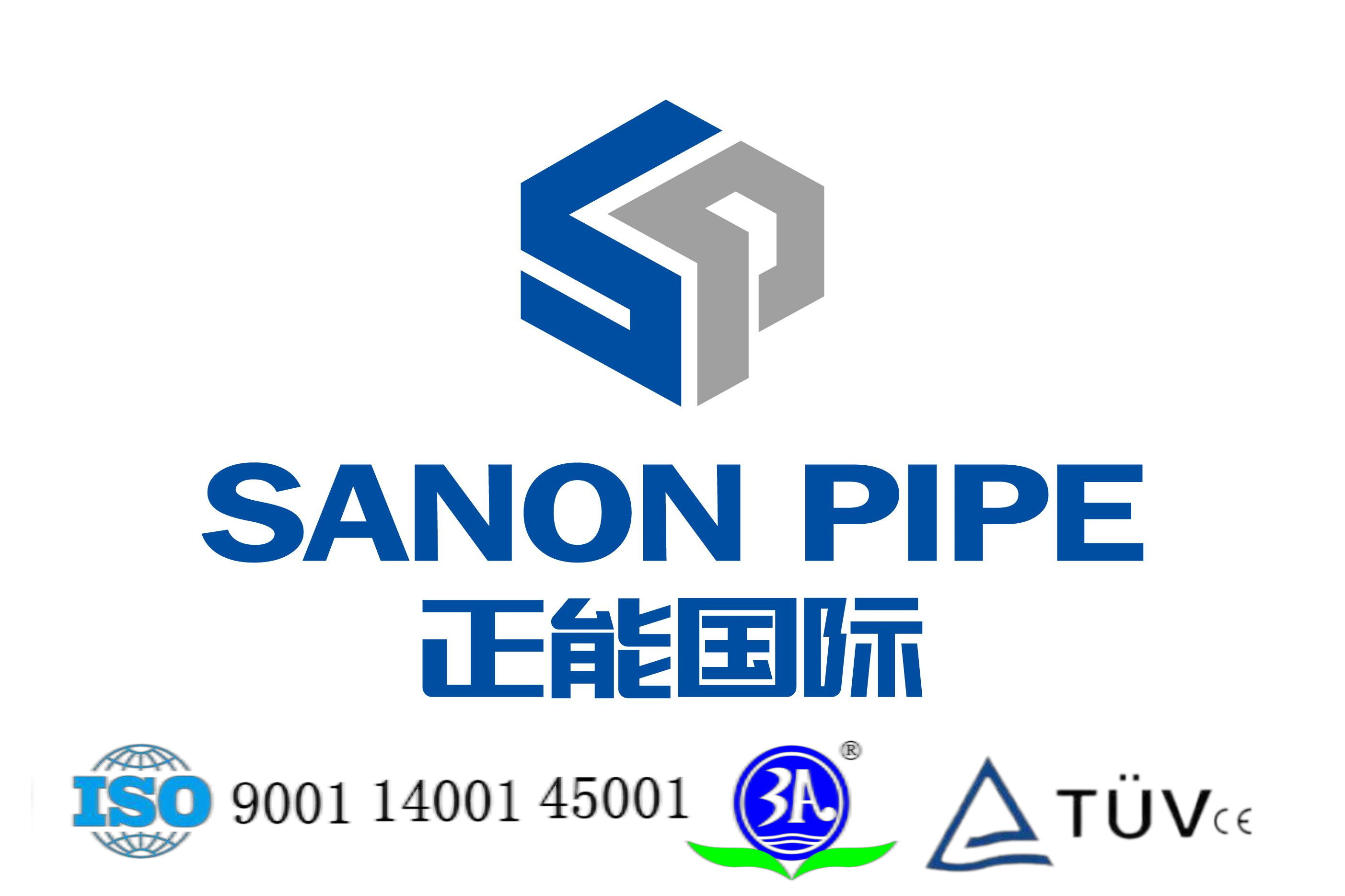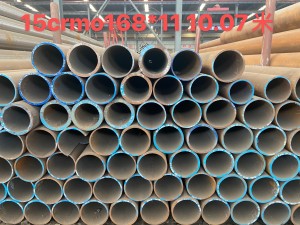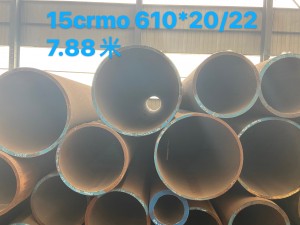15Mo3 (15MoG) : It is a steel pipe in DIN17175 standard. It is a small diameter carbon molybdenum steel tube for boiler and superheater, and a pearlescent type hot strength steel. In 1995, it was transplanted to GB5310 and named 15MoG. Its chemical composition is simple, but it contains molybdenum, so it has better thermal strength than carbon steel while maintaining the same process performance as carbon steel. Because of its good performance, cheap price, has been widely used in the world. However, the steel has a tendency to graphitization after long-term operation at high temperature, so its operating temperature should be controlled below 510℃, and the amount of Al added in smelting should be limited to control and delay the graphitization process. This steel tube is mainly used for low temperature superheater and low temperature reheater. The wall temperature is below 510℃. Its chemical composition C0.12-0.20, SI0.10-0.35, MN0.40-0.80, S≤0.035, P≤0.035, MO0.25-0.35; The normal strength level σs≥270-285, σb≥450-600 MPa; Plastic delta 22 or higher.
15CrMoG: GB5310-95 steel (corresponding to 1CR-1/2Mo and 11/4CR-1/2MO-Si steel widely used in the world), its chromium content is higher than 12CrMo steel, so it has higher thermal strength at 500-550℃. When the temperature exceeds 550℃, the thermal strength of the steel decreases significantly. When it is operated for a long time at 500-550℃, graphitization does not occur, but carbide spheroidization and alloying element redistribution occur, which lead to the decrease of the thermal strength of the steel. The steel has good resistance to relaxation at 450℃. Its pipe making and welding process performance is good. It is mainly used as high and medium pressure steam conduit and coupling box with steam parameter below 550℃, superheater tube with wall temperature below 560℃, etc. Its chemical composition C0.12-0.18, Si0.17-0.37, MN0.40-0.70, S≤0.030, P≤0.030, CR0.80-1.10, MO0.40-0.55; Under normal tempering condition, the strength level σs≥235, σb≥440-640 MPa; Plastic delta p 21.
T22 (P22), 12Cr2MoG: T22 (P22) are ASME SA213 (SA335) code materials, which are included in GB5310-95. In CR-Mo steel series, its thermal strength performance is relatively high, the same temperature durable strength and allowable stress than 9CR-1Mo steel even higher, so it is widely used in foreign thermal power, nuclear power and pressure vessels. However, its technical economy is inferior to our 12Cr1MoV, so it is less used in domestic thermal power boiler manufacturing. Use only when required (especially when designed and manufactured in accordance with ASME code). The steel is insensitive to heat treatment and has high durable plasticity and good welding performance. T22 small diameter tube is mainly used as the metal wall temperature below 580℃ superheater and reheater heating surface tube, etc., P22 large diameter tube is mainly used in the metal wall temperature is not more than 565℃ superheater/reheater coupling box and the main steam pipe. Its chemical composition C≤0.15, Si≤0.50, MN0.30-0.60, S≤0.025, P≤0.025, CR1.90-2.60, MO0.87-1.13; Under normal tempering condition, the strength level σs≥280, σb≥450-600 MPa; Plastic delta 20 or more.
12Cr1MoVG: GB5310-95 nano standard steel, is the domestic high pressure, ultra high pressure, subcritical power plant boiler superheater, collection box and main steam conduit widely used steel. The chemical composition and mechanical properties of 12Cr1MoV plate are basically the same. Its chemical composition is simple, the total alloy content is less than 2%, for low carbon, low alloy pearlescent type of hot strength steel. Vanadium can form stable carbide VC with carbon, which can make chromium and molybdenum in steel preferentially exist in ferrite, and slow down the transfer rate of chromium and molybdenum from ferrite to carbide, so that the steel is more stable at high temperature. The total amount of alloyed elements in this steel is only half of the 2.25 CR-1Mo steel widely used abroad, but the durable strength at 580℃ and 100,000 h is 40% higher than that of the latter. Moreover, the production process is simple and the welding performance is good. As long as the heat treatment process is strict, the comprehensive performance and thermal strength performance can be satisfied. The actual operation of the power station shows that the 12Cr1MoV main steam pipeline can still be used after the safe operation at 540℃ for 100,000 hours. The large-diameter tube is mainly used as the collection box and main steam conduit of the steam parameter below 565℃, and the small-diameter tube is used for the boiler heating surface tube of the metal wall temperature below 580℃.
12Cr2MoWVTiB (G102) : Gb5310-95 in the steel, for China’s own development in the 1960s, low carbon, low alloy (a small amount of diversity) Bainite type hot strength steel, from the 1970s was included in the Ministry of Metallurgical Industry standard YB529-70 and now the national standard, at the end of 1980 the steel through the Ministry of Metallurgical Industry, the Ministry of Machinery and the Ministry of electric power joint identification. The steel has good comprehensive mechanical properties, and its thermal strength and service temperature are higher than those of similar steels abroad, reaching the level of some chromium-nickel austenitic steels at 620℃. This is because the steel contains many kinds of alloying elements, and also added to improve the oxidation resistance of elements such as Cr, Si, so the maximum service temperature can reach 620℃. The actual operation of the power station shows that the structure and properties of the steel pipe do not change much after long-term operation. It is mainly used as superheater tube and reheater tube for ultra-high parameter boiler with metal temperature ≤620℃. Its chemical composition C0.08-0.15, Si0.45-0.75, MN0.45-0.65, S≤0.030, P≤0.030, CR1.60-2.10, MO0.50-0.65, V0.28-0.42, TI0.08-0.18, W0.30-0.55, B0.002-0.008; Under normal tempering condition, the strength level σs≥345, σb≥540-735 MPa; Plastic delta p 18.
Sa-213t91 (335P91) : Steel number in ASME SA-213 (335) standard. Is developed by the Rubber Ridge National Laboratory of the United States of America, used in nuclear power (can also be used in other aspects) high temperature compression components of the material, the steel is based on T9 (9CR-1MO) steel, in the limit of carbon content, more strictly control the content of P and S and other residual elements at the same time, A new type of ferritic heat-resistant alloy steel was formed by adding trace amounts of 0.030-0.070% N, 0.18-0.25% V and 0.06-0.10% Nb to meet the requirements of grain refinement. It is ASME SA-213 column standard steel, which was transplanted into GB5310 standard in 1995 and the grade is 10Cr9Mo1VNb. The international standard ISO/ DIS9399-2 is listed as X10 CRMOVNB9-1.
Due to its high chromium content (9%), its oxidation resistance, corrosion resistance, high temperature strength and non-graphitization tendency are better than those of low alloy steel. Molybdenum (1%) mainly improves the high temperature strength and inhibits the hot embrittling tendency of chromium steel. Compared with T9, the welding and thermal fatigue properties are improved, the durable strength at 600℃ is three times that of the latter, and the excellent high-temperature corrosion resistance of T9 (9CR-1Mo) steel is maintained. Compared with austenitic stainless steel, the expansion coefficient is small, the thermal conductivity is good, and has a higher durable strength (such as with TP304 austenitic steel ratio, until the strong temperature is 625℃, equal stress temperature is 607℃). Therefore, it has better comprehensive mechanical properties, stable structure and properties before and after aging, good welding and process properties, high durable strength and oxidation resistance. It is mainly used for superheater and reheater with metal temperature ≤650℃ in boiler. Its chemical composition C0.08-0.12, Si0.20-0.50, MN0.30-0.60, S≤0.010, P≤0.020, CR8.00-9.50, MO0.85-1.05, V0.18-0.25, Al≤0.04, NB0.06-0.10, N0.03-0.07; Under normal tempering condition, the strength level σs≥415, σb≥585 MPa; Plastic delta 20 or more.
Post time: Sep-07-2022








